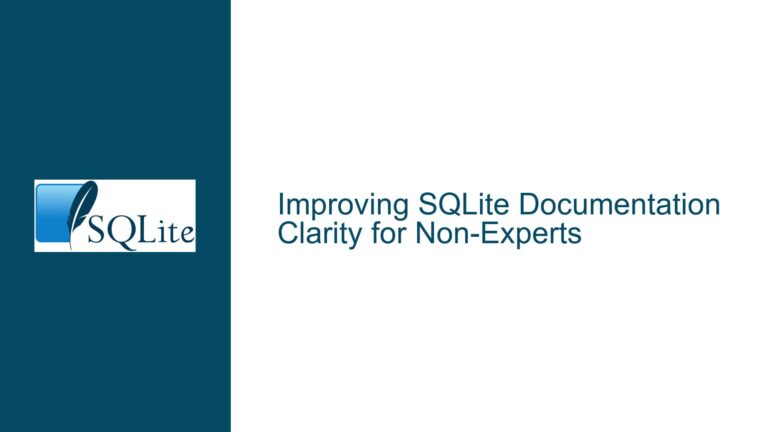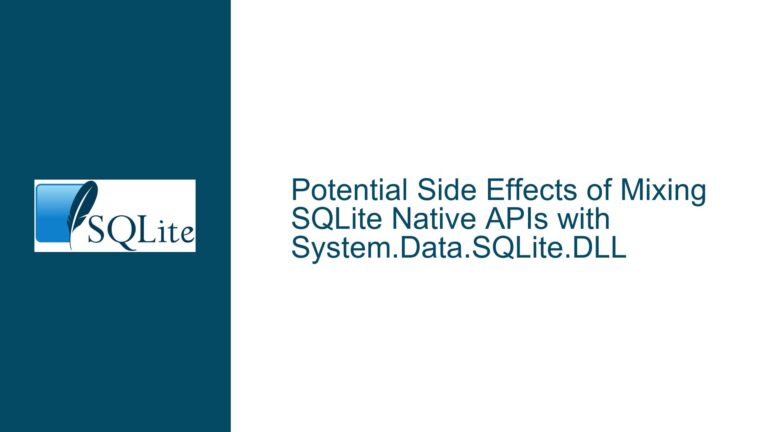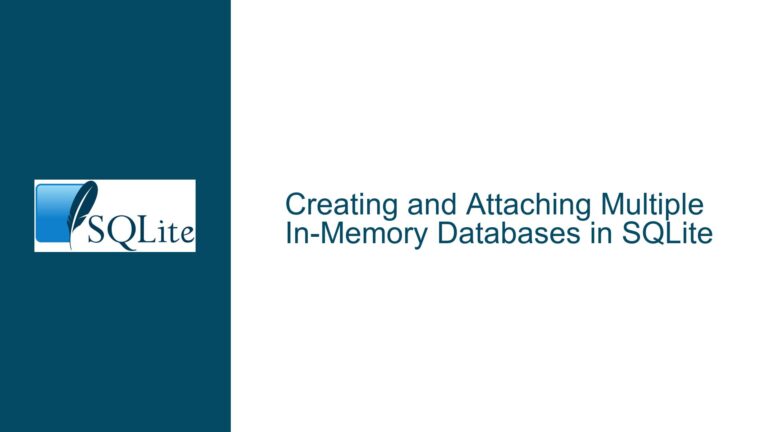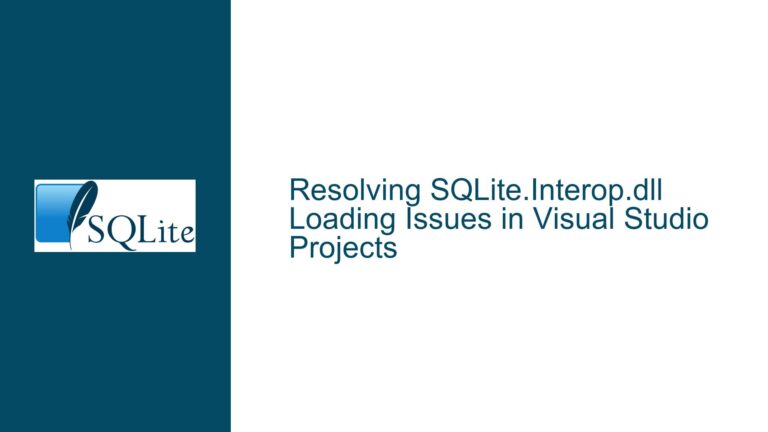Infinite Loops in SQLite Commit Hooks with Explicit Transactions
Transaction Commit Hooks, Implicit vs. Explicit Transactions, and Recursive Execution
Commit Hook Execution Contexts and Transaction State Management
The core issue revolves around the interaction between SQLite commit hooks, transaction types (implicit vs. explicit), and how database state management triggers recursive execution. In SQLite, a commit hook is a user-defined callback function invoked when a transaction is about to commit. Its return value determines whether the commit proceeds (0) or is converted to a rollback (non-zero). The critical observation is that executing a SELECT statement inside a commit hook during an explicit transaction leads to an infinite loop, while the same operation in an implicit transaction completes normally.
This discrepancy arises from differences in how SQLite manages transaction boundaries and nested operations. Implicit transactions are automatically created for standalone DML statements (e.g., single INSERT/UPDATE/DELETE) that are not wrapped in an explicit BEGIN…COMMIT block. Explicit transactions are user-defined using BEGIN, COMMIT, or SAVEPOINT commands. When a commit hook modifies database state or triggers additional transactions, it creates a chain reaction that depends on the transaction type.
The infinite loop occurs because the SELECT statement inside the commit hook interacts with SQLite’s internal transaction state machine. During explicit transaction processing, the database engine expects full control over the transition from "active" to "committed" states. Any operation that implicitly or explicitly modifies transaction state within the commit hook can reset or reinitialize this state machine, forcing SQLite to reprocess the commit phase indefinitely.
Transaction State Conflicts and Recursive Commit Invocation
The infinite loop in explicit transactions stems from three interrelated factors:
Transaction Nesting Rules: SQLite prohibits nested transactions for the same database connection. Explicit transactions enforce strict nesting via the
transactionTcl command, which uses SAVEPOINTs under the hood. The commit hook runs during the "commit pending" phase, where the transaction is still active but about to finalize. Executing a SELECT statement at this point implicitly acquires a read-lock and modifies the connection’s state.Read Operations and Locking Behavior: A SELECT statement inside the commit hook initiates a new read transaction (even temporarily), conflicting with the pending write transaction. SQLite uses a lock escalation model (UNLOCKED → SHARED → RESERVED → PENDING → EXCLUSIVE). During explicit transaction commit, the connection holds an EXCLUSIVE lock. A SELECT requires a SHARED lock, which is incompatible with the EXCLUSIVE lock held during commit. This conflict forces SQLite to reset the transaction state and retry the commit, invoking the hook again.
Commit Hook Re-Entrancy: The commit hook is designed to be non-reentrant. If the hook function triggers another commit (even indirectly), SQLite may re-invoke the hook before the previous invocation completes. In the provided example, the SELECT statement does not directly modify data but alters the transaction state enough to restart the commit process, creating a loop.
Mitigating Infinite Loops Through Transaction Isolation and Hook Design
To resolve this issue, developers must adhere to SQLite’s constraints on commit hooks and transaction management:
1. Avoid All Database Operations in Commit Hooks
Commit hooks should never execute SQL statements (SELECT, INSERT, etc.) or interact with the database connection. Even read-only operations can destabilize transaction state. Instead, use the hook to perform non-database tasks like logging or external notifications.
2. Use Implicit Transactions for Simple Operations
When possible, rely on SQLite’s automatic transaction handling for single-statement operations. Implicit transactions avoid nesting issues because they finalize immediately after execution, leaving the connection in an UNLOCKED state. The example’s first INSERT succeeds because the implicit transaction completes before the commit hook runs, preventing state conflicts.
3. Refactor Explicit Transactions with State Flags
If explicit transactions are necessary, manage commit-related logic externally. Add a flag to bypass the commit hook during nested operations:
set ::commit_in_progress 0
proc safe_commit_hook {} {
if {$::commit_in_progress} { return 0 }
set ::commit_in_progress 1
# Perform non-database actions here
set ::commit_in_progress 0
return 0
}
db1 commit_hook safe_commit_hook
4. Leverage SQLite’s Transaction State APIs
Use sqlite3_get_autocommit() C function (or equivalent in bindings) to detect active transactions. While Tcl’s interface doesn’t expose this directly, you can track transaction state manually:
set ::transaction_depth 0
db1 transaction {
incr ::transaction_depth
# ... operations ...
incr ::transaction_depth -1
}
proc safe_hook {} {
if {$::transaction_depth > 0} {
# Avoid hazardous operations during explicit transactions
return 0
}
}
5. Debug with Transaction State Logging
Insert debug statements to track transaction state changes and hook invocations:
proc debug_hook {} {
puts "Commit hook invoked at depth $::transaction_depth"
return 0
}
db1 commit_hook debug_hook
6. Utilize Post-Commit Handlers
For tasks requiring database access after a commit, register a separate callback using Tcl’s after idle or similar deferred execution mechanisms:
proc post_commit_task {} {
db1 eval {SELECT i FROM t}
}
proc commit_hook {} {
after idle post_commit_task
return 0
}
7. Understand SQLite’s Locking Model
Explicit transactions hold locks until COMMIT/ROLLBACK. A commit hook must not alter lock state. Review SQLite’s documentation on locking to ensure operations don’t conflict with transaction phases.
8. Test with Different Journal Modes
Some journal modes (e.g., WAL) allow concurrent reads and writes, which might alter hook behavior. Test across modes to identify environment-specific issues:
db1 eval {PRAGMA journal_mode=WAL}
By rigorously isolating commit hooks from database operations and respecting transaction state boundaries, developers can prevent infinite loops and ensure reliable transaction processing in SQLite.






